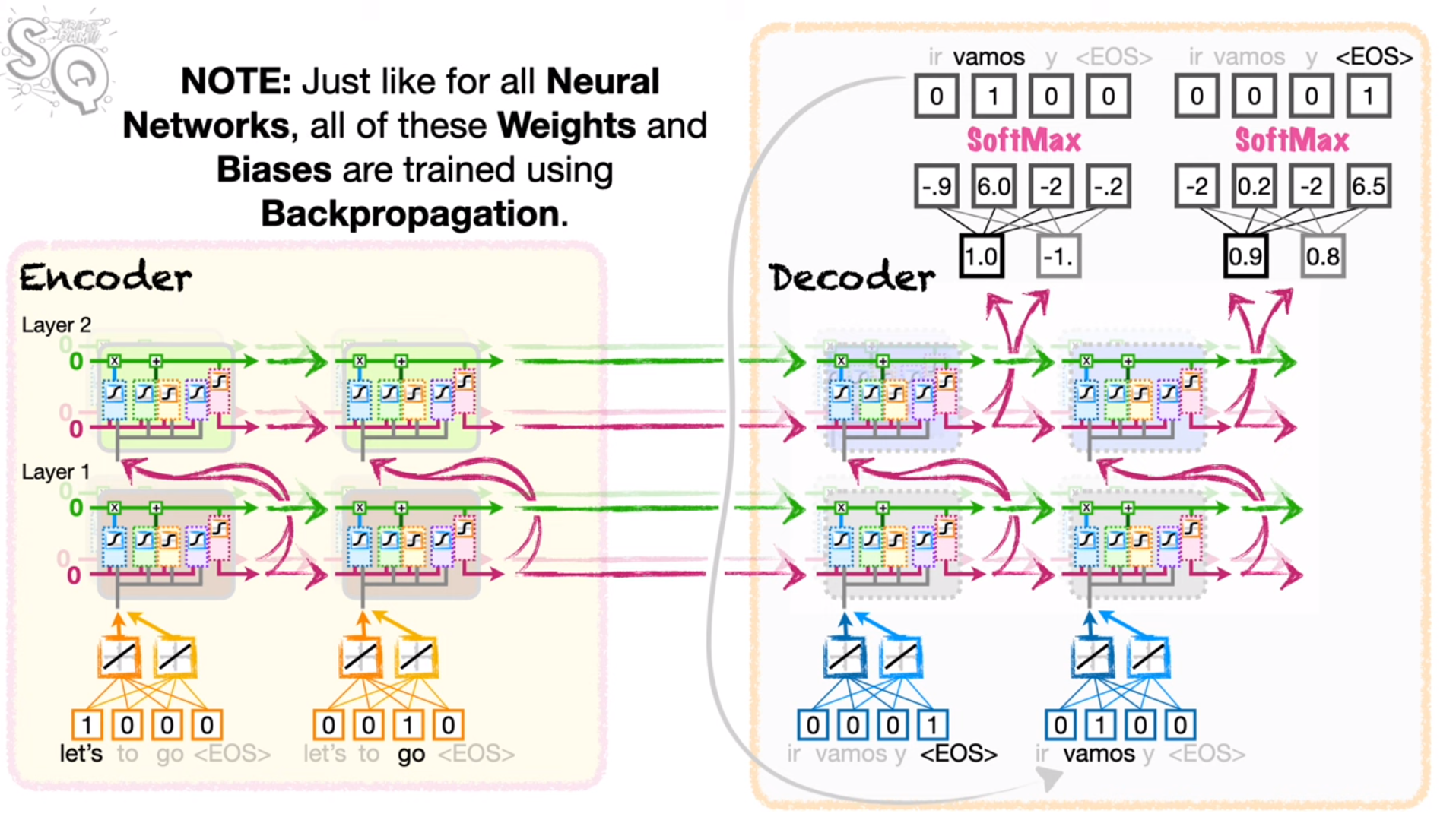8 Sequence-to-Sequence (seq2seq) Encoder-Decoder Neural Networks
These notes are based on Josh Starmer’s video Sequence-to-Sequence (seq2seq) Encoder-Decoder Neural Networks, Clearly Explained!!!
Sequence-to-sequence problems - when you want to translate one sequence into a sequence of another kind, then you have a sequence-to-sequence problem. seq2seq models can be used to address these sorts of problems.
To understand these models better, take the following example. Suppose you want to translate the sentence, “Let’s go.” into Spanish - “Vamos.”
- challenge 1: different sentences can be of different length, so the model needs to be capable of accepting inputs of multiple lengths.
- challenge 2: the output must be able to accomodate a varying length sentence.
LSTMs can be used to address this problem. Namely, you would need to plug “Let’s” and then “go” into the LSTM sequentially. Also, since the vocabulary of words we train our model on incorporate a variety of words and symbols, we call these elements “tokens”. Of course, words are used through vector embeddings of words to avoid as much computational overhead as less efficient methods.

Of course, additional LSTM cells can be added (horizontally) in order to increase the number of weights and biases. Additional layers (vertical) of LSTMs can also be added.
- layers - additional LSTM cells which are added on top of the previous layer. They are connected sequentially, and take inputs from the short-term memory outputs of the LSTM cell which sits beneath them. This short-term memory output moves forward to the next cell in the layer too.
These units form the encoder portion of the “encoder-decoder” model. The last long-term memories from the last cells of all layers of the encoder portion form the context vector which initializes the long and short-term memories of the decoder LSTMs.
The decoder portion of the network is comprised of an idetical number of layers and cells (it’s not clear to me at this time whether this is a required behavior of seq2seq networks) but has separate weights and biases from the encoder. The ultimate goal of the decoder is to decode the context vector from the encoder to the output sentence.
Just as in the encoder, the input to the first activation of the LSTM cell is an embedding layer (create a vector embedding of the word). Once the LSTM is run, the output of the top cell of the final layer is run through a fully connected layer to outputs. The FC layer as an input for each of the outputs in the LSTM (long and short-term memory) and an output for each of the tokens in the Spanish vocabulary, and softmax classification is used to determine what the output word is. This word is actually fed back to the next cell in the first layer of the decoder which embeds the output as an input to the subsequent LSTM cells. The decoder will unroll the two LSTM cells (in the first and second layers of the decoder - reading inputs) until an
8.0.1 Unique features of Encoder-Decoder Training
During inference with encoder-decoders, the output of the LSTM cell in the top layer is used as input to the embedding layer for the next set of LSTM cells. However, during training, the actual next word embedding is used isntead, rather than the predicted word embedding. Additionally, each output phrase ends where the known phrase ends! This method is known as Teacher forcing